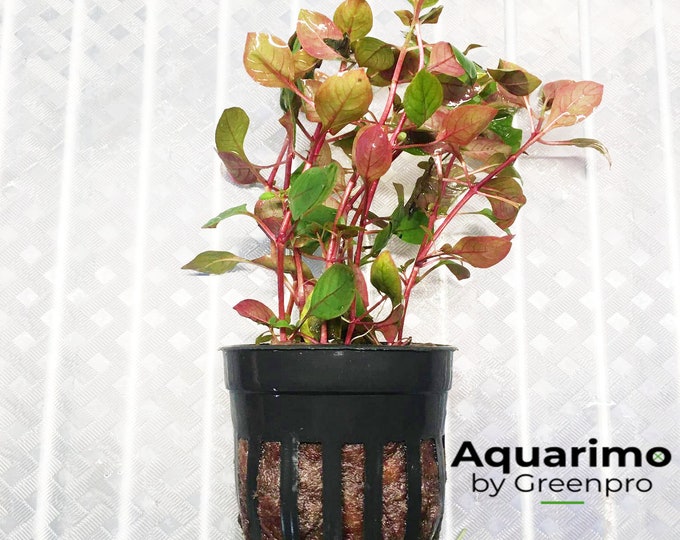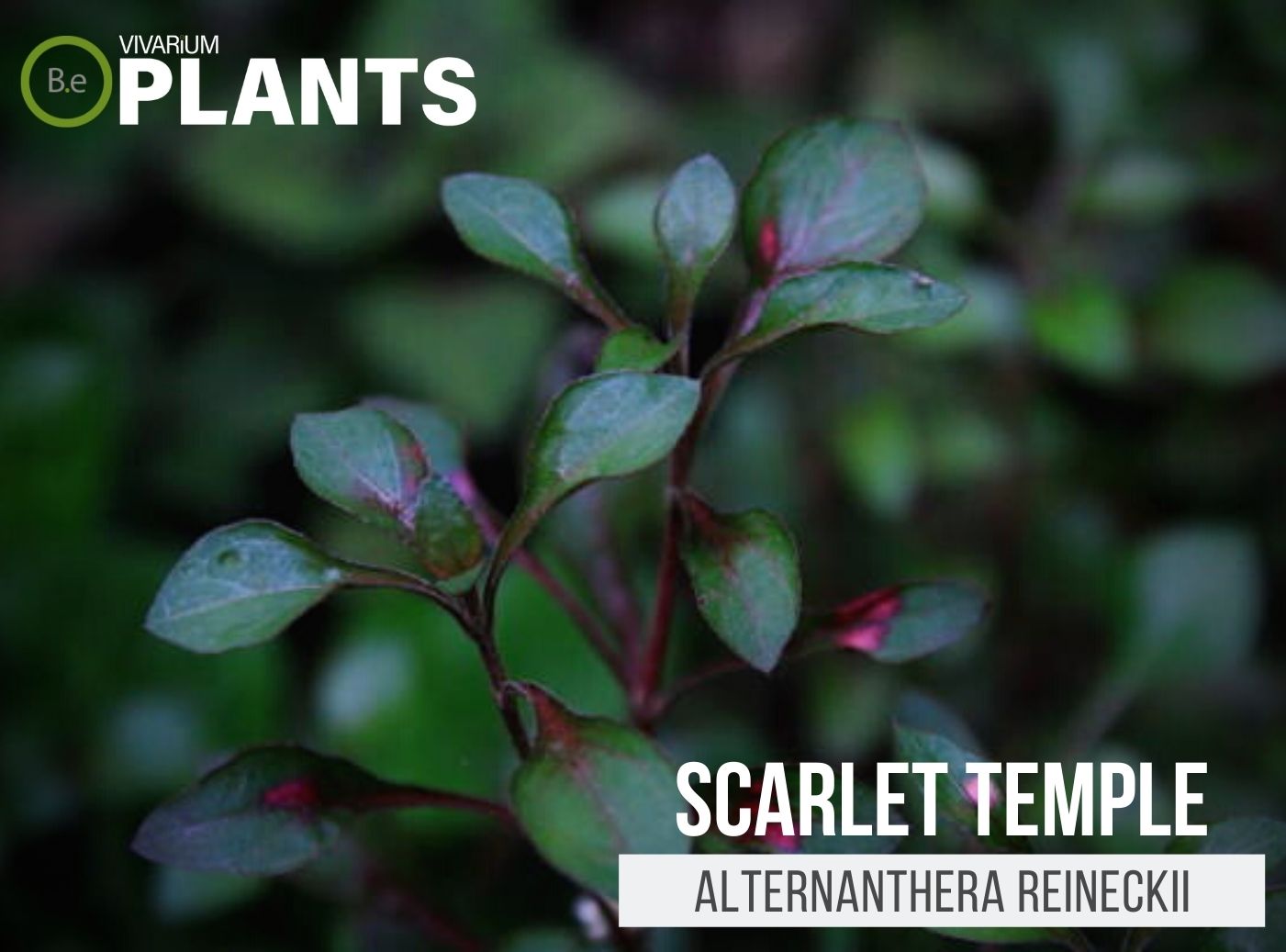Ludwigia repens (Red Ludwigia) is an attractive aquatic stem plant that makes a great addition to mainly any tank.
It belongs to the Onagraceae family and stands out with its bright, green–and–red coloration.
This fast–growing, low–maintenance plant is a great choice for both beginners and experienced aquarists and is therefore often used for aquascaping.
If you’re looking for an easy, low–light–requiring plant that will bring a lot of color to your tank, this might be the plant for you!
Quick Stats:
Scientific Name: Ludwigia repens
Family: Onagraceae
Common Names: Red Ludwigia
Habitat: Aquatic
Height: 8-12 inches
pH Range: 6.5-8.5
Temperature: 75-82°F
What Is Ludwigia Repens?
Red Ludwigia, scientifically known as Ludwigia repens is a brightly colored, freshwater aquatic stem plant native to the Americas.
This species is classified as a submerged aquatic plant, meaning it is best suited for aquariums with a substrate between 4 and 8 inches deep.
Its stems typically grow between 8 to 12 inches in height, though some specimens can grow upwards of 16 inches in ideal conditions.
This bright and beautiful plant can add a lot of vibrant color and texture to an aquarium, making it a great choice for aquarists looking for a colorful centerpiece.


Ludwigia Repens Facts
Red Ludwigia is an incredibly fast-growing plant. It grows best in good light and is considered to be a low-light plant, meaning it can survive in lower light levels than other aquatics.
It can be pruned, propagated, and grown both underwater and along the aquarium’s border. This species does not require too much maintenance and is fairly hardy, making it a great choice for beginners.
Description
Red Ludwigia has thin, curved stems and pointed oval leaves.
Its leaves can appear either green or a deep red, depending on the lighting in the tank and the amount of fertilizer used.
The plant can grow up to 12 inches in height and its roots will reach down into the substrate, though they may require occasional trimming if they become too large.
Habitat
Red Ludwigia is native to Central and South America and therefore will do best in warm and subtropical temperatures.
The ideal temperature range for this species is 75-82°F. Red Ludwigia prefers moist and well-oxygenated water and is easy to cultivate in the home aquarium.
pH Preference
Red Ludwigia prefers a pH range of 6.5-8.5 but can survive in a higher pH range as well.
The ideal pH for this species is 7, and it should be kept in slightly acidic or neutral waters. If the pH of the water is too low, the leaves may become pale or yellowish in color.
Vivarium Type
Red Ludwigia is quite an easy-going species. With that in mind, it will not be too complicated when choosing the type of enclosure it is grown in. It is best to try and replicate the plant’s natural habitat as much as possible.
Doing so will make it easier to provide this foliage plant with its basic needs. The proper setup and theme of the enclosure will make a big difference to the overall look and health of the plant. Be sure to choose setups that are moist and high in humidity.
Here are recommended vivariums it will do well in:
-
- Paludariums – Half aquatic/ half terrain-based enclosure.
- Ripariums – Mostly aquatic-based enclosures with some terrain features present.
- Aquariums – Fully aquatic-based enclosure with little to no dry terrain.
Vivarium Placement
Red Ludwigia can be placed as a centerpiece in the aquarium or as a border along a rocky wall or driftwood. It does well both in shady areas as well as areas with a strong light source.
Red Ludwigia is one of the most beautiful plants in aquascaping and therefore can be used as a centerpiece or focal point in the tank.
Substrate
Red Ludwigia needs a nutrient-rich aquarium substrate to survive and thrive. A nutrient-rich substrate is essential for aquatic plants, as it helps to provide the nourishment they need to grow.
A substrate composed of small, smooth gravel or sand is ideal, as it will provide better tethering for the roots and it will also provide an easier environment to keep clean.
Lighting
Red Ludwigia can tolerate low aquarium light levels and is considered to be a “low-light” species.
It does best in medium to strong lighting, however, and will benefit from a higher light intensity.
Medium to strong lighting should be provided by either LED, fluorescent, or high-output T5 lights.
Buy Ludwigia Repens
When buying Red Ludwigia, there are a few things to keep in mind. Making sure the plant is healthy when purchased is essential for its success in a vivarium or pond. Vegetation that is already in poor conditions will have a very hard time adjusting to new environments.
Click the image below to learn more about the current price and other relative info about this plant.
Ludwigia Repens Care & Propagation
Red Ludwigia is relatively easy to care for and is suited for both beginning and experienced aquarists.
This species should be regularly pruned and its roots should be trimmed if they become too long or begin to spread out of the substrate.
Pruning should be done at least once a month to keep the plant in check and maintain its aesthetic.
How To Grow
Red Ludwigia can be easily propagated by taking cuttings from existing stems.
Cuttings should be placed in a clean container of water, where they should initially root within a few days before being added to the aquarium.
The cuttings should be planted on a substrate that is rich in nutrients and ideally with a light to medium amount of fertilizer. This will help the plant establish its roots faster.
Water Requirements
Red Ludwigia should have regular monthly water changes, as it does best in clean, well-oxygenated water.
The roots of this species may require occasional trimming if they become too long or begin to spread out of the substrate.
Plants Similar To Ludwigia Repens
Adding diversity to an enclosure is vital to an aesthetically pleasing setup. Try mixing up the look of your vivarium with different flora that can easily co-exist in the same types of environment.
Furthermore, if you find the Red Ludwigia hard to acquire or would like to consider something similar to this aquarium plant… Here are other stem plants you might find will do well with or in place of Ludwigia repens:
Conclusion
Ludwigia repens is an attractive and easy-to-grow freshwater aquatic plant that can be a great addition to any tank.
It is fast-growing, low-maintenance, and can bring a lot of color and texture to an aquarium.
Although it is considered a low-light plant, it does do best in medium to strong lighting and should be watered and pruned regularly.
With the proper care and attention, this beautiful stem plant can be a great addition to any aquarium.
Frequently Asked Questions
No, Red Ludwigia does not require extra added carbon dioxide. However, it can be beneficial for the plant to remain healthy and vibrant. Without a sufficient supply of CO2, the plants may not receive enough nutrients and can display signs of stunted growth. To ensure optimal growth, an external CO2 supply may be necessary.
Yes, Red Ludwigia (Ludwigia repens) is a root–feeding plant. It obtains nutrients by utilizing its roots to absorb minerals and essential components of nutrition from the water.
Yes, Ludwigia repens can grow in low light conditions. It is an easy–care aquatic plant that does best in full to partial sun, but can still thrive in low light.
Yes, Ludwigia repens is a fast–growing plant that makes a great addition to many aquatic settings. It‘s easy to care for and can be quickly propagated by cutting and replanting.
1. Prepare the aquarium by filling it with water and adding the right amount of substrate for the Ludwigia repens plant to grow.
2. Place the Ludwigia repens plant in the aquarium and make sure its roots are submerged in the substrate.
3. Trim the Ludwigia repens so it has a well-rounded shape.
4. Make sure the Ludwigia repens is exposed to the correct levels of light and nutrients for optimal growth.
5. Monitor the Ludwigia repens and make sure there is no algae growth near the plant.




